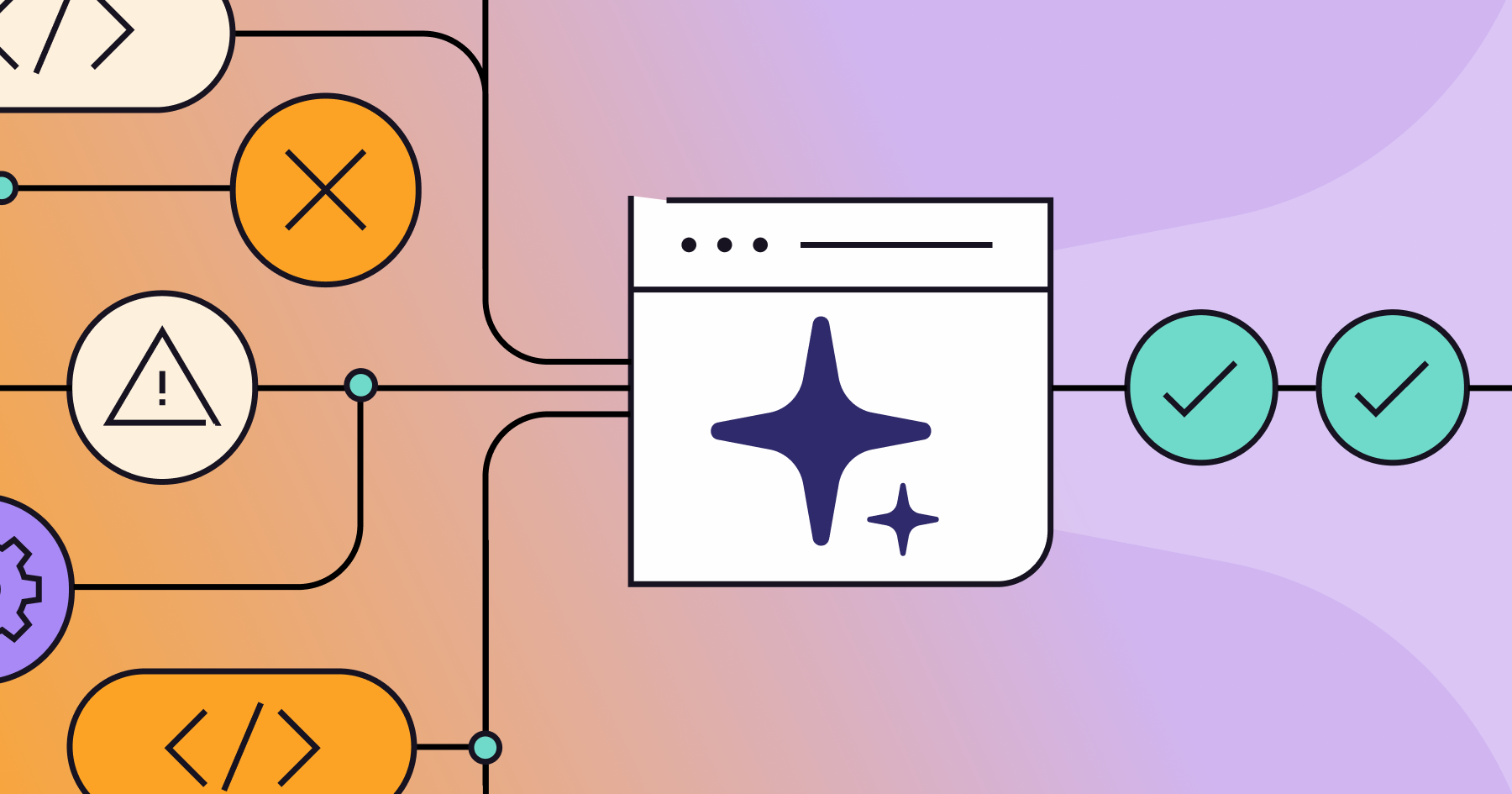Software development today involves managing an unprecedented number of moving parts. Teams are handling more languages, tools, and dependencies than ever while facing increased security requirements and shorter deployment cycles. AI offers a way to handle this growing complexity - but only with the right approach.
Adopting any emerging technology can sometimes have unexpected consequences. Installing a new app-based home security system may require learning to use different tools or deal with false alarms. If you get an electric vehicle, you may experience lower fuel costs for your commute, but you’ll need to adjust to new controls and be mindful of where and how far you drive.
Incorporating AI into the software development lifecycle takes this concept to the next level. AI can simplify work for developers by eliminating repetitive tasks - but as a leader, you’re likely weighing the promises of AI against very real concerns, from change management to security to the long-term career stability of your developers.
Understanding where AI fits
Software development is a complex process that involves multiple steps, including coding, testing, debugging, and maintenance. Development teams face increasing pressure from multiple directions:
- Rapidly evolving technologies: Developers may struggle to keep up with the latest tools and techniques as technology advances.
- Increasing customer expectations: Customers are becoming more tech-savvy and have higher expectations for software quality, functionality, and security - putting additional pressure on developers to deliver complex and robust solutions.
- Legacy systems: Many organizations still rely on outdated or legacy systems that can be difficult to integrate with newer technologies, resulting in complexity in the development process.
- Evolving security landscape: As new, more advanced cyber threats emerge, developers must be constantly vigilant against security vulnerabilities, adding another layer of complexity.
As this complexity increases, it's not always clear where AI can deliver on its promises. The key is identifying where AI can have the most impact. One question I hear often is whether AI code assistants will help to reduce this complexity by augmenting developers’ current workflow or whether developers will need to adapt to an entirely new way of working. The answer, as I see it, is both. Human developers will need to get used to working with AI tools and large language models. And AI code assistants will adapt over time, tapping into more specialized models closely tailored to developers’ workflows. Before long, users will engage with AI agents that respond intuitively and learn over time.
Starting smart with a phased implementation
Implementing AI isn’t as simple as flipping a light switch. To harness the efficiencies of AI safely and strategically without introducing unnecessary complexity, I’ve found the most successful teams adopt a gradual approach. They start with low-risk areas to avoid pitfalls and allow development teams to experiment with how AI and other tools fit with their workflows. Be prepared: You might see a temporary dip in productivity before realizing long-term efficiency gains.
Think about how changes ripple through your organization. Teams often face initial resistance to change, and in the case of AI, there is also a potential shift in code quality as AI-driven code volume increases. Understanding how the entire software development lifecycle benefits from AI is essential for successful adoption.
From there, you’ll need clear guardrails and policies for AI usage, including employee guidelines, data sanitization practices, in-product disclosures, and moderation capabilities. What matters is staying focused on real results: continuously evaluating and adjusting how your teams use AI to ensure it's making development more efficient.
AI and cybersecurity
Staying focused on what matters doesn’t just apply to automating code review and improving development cycles. Reducing complexity in software development also yields significant security benefits. The ever-increasing volume and sophistication of cyber attacks, combined with the complexity of organizations’ tech stacks, significantly contribute to security frustrations.
Building large, multi-faceted software systems will always involve some complexity - that's unavoidable. However, you can take steps to minimize complications like difficult-to-maintain code repositories and redundant dependencies. When you let this unnecessary complexity creep in, you’re not just creating a larger attack surface - you’re giving your teams more security findings to sort through, prioritize, and address.
This is where your teams can use AI to minimize the potential negative security impacts of AI tools in other parts of the software development lifecycle. For example, the new generation of AI-powered development tools evaluate AI-generated code to ensure it doesn’t contain vulnerabilities. If vulnerabilities exist, the tool can help explain the expected impact and how developers can address the issue.
AI creates additional security guardrails to prevent problems such as bad actors injecting harmful answers into large language models while helping your teams create more secure and compliant software. With predictive threat analysis, AI can scan code for security threats and automatically apply patches or reconfigure security settings in response to emerging vulnerabilities. Finally, compliance monitoring is another burden that AI development tools can help lift for software engineering teams.
Measuring success
GitLab research has shown that software developers spend 25% or less of their day writing code; the rest is devoted to fixing errors, resolving security issues, and updating legacy systems. Automating these tasks with AI allows your teams to utilize their expertise more effectively and focus on problem-solving rather than recreating existing code. This reduces complexity, drives innovation by eliminating wasted effort, and enhances job satisfaction.
From a business standpoint, objectives such as improving developer productivity and producing better, more secure code are key performance indicators (KPIs) that translate directly to improved cycle times and better results.
These are tangible improvements, but there are other areas where AI can reduce complexity. For example, code review has been shown to improve code but often creates bottlenecks as developers wait for review. AI streamlines code reviews and creates comprehensive testing scenarios, enhancing code reliability and reducing bugs, leading to improved software quality and higher customer satisfaction.
Furthermore, AI can predict development bottlenecks and automate routine tasks, leading to more predictable release cycles and faster market entry. Its ability to rapidly and accurately tailor software to user feedback ensures that products meet customer needs and expectations more effectively.
The path forward: Controlling complexity with AI
The complexity of software development may continue to ebb and flow as development teams embed new AI technologies more deeply into their workflows and AI tools become more tailored to developers’ specific needs. But as long as your teams can transfer repetitive development tasks to AI while supervising AI output and intervening when needed, your organization should be able to manage complexity over the long term.
By providing your development teams with the proper training and time to experiment, you’ll find your organization better equipped to handle increasing complexity while delivering better, more secure software more efficiently.
Next steps
Getting started with AI in software development: A guide for leaders
Download our ebook on how to get started using AI in software development to learn tangible takeaways for creating a strategic AI implementation that will ultimately help you create secure software faster.
Frequently asked questions
Key takeaways
- AI offers a promising solution to software development complexity by automating routine tasks like debugging, code reviews, and testing — but it requires thoughtful human oversight to avoid introducing unnecessary complexity.
- The successful implementation of AI in software development involves a gradual approach, starting with low-risk areas, continuous adjustments, and the formulation of policies for AI usage.
- AI serves a vital role in reducing software development challenges, including improving code reliability, meeting customer expectations, and enhancing cybersecurity measures.

